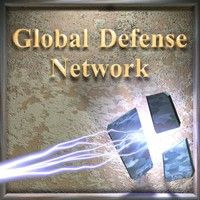Retro Replay Review
Gameplay
Korea: Forgotten Conflict places you in command of a small squad of soldiers navigating the brutal, often unforgiving terrain of the Korean War. The real-time tactical system emphasizes precise positioning, timing, and careful coordination between squad members. You’ll need to leverage each soldier’s unique skill set—be it demolitions expertise, sharpshooting prowess, or medical training—to complete objectives efficiently and minimize casualties. The blend of real-time action and pause-to-command functionality ensures that engagements stay tense without becoming overwhelming.
The variety of mission types keeps the experience fresh across the campaign. One mission might have you infiltrating an enemy stronghold to plant explosives and sever supply lines, while the next could involve protecting a convoy under heavy artillery fire. Missions requiring bomb defusal in urban environments test your patience and observational skills, whereas hostage rescue or prisoner capture scenarios challenge your planning and stealth tactics. This diversity in mission design not only heightens replay value but also highlights the flexibility of your squad’s composition.
AI behavior is generally solid, with enemy soldiers reacting to noise, flanking routes, and suppressive fire in a believable manner. However, there are occasional moments when foes become slightly too predictable or entrenched, which can reduce tension in some firefights. Friendly AI also largely succeeds in following your orders, though you may sometimes find medics prioritizing healing nearby allies over your explicit directive. These minor hiccups aside, the core gameplay loop of planning, executing, and adapting feels consistently rewarding.
Graphics
Visuals in Korea: Forgotten Conflict strike a balance between historical authenticity and playability. Environments range from verdant hillside encampments to the cramped corridors of bombed-out buildings, each rendered with attention to period-appropriate details such as military vehicles, sandbag fortifications, and weathered architecture. Textures hold up well under close inspection, and destructible elements—like crumbling walls or overturned crates—add dynamic depth to firefights and demolitions.
Character models show a decent level of polish, with distinct uniforms and weaponry that reflect the varied nationalities and units present during the war. Animations for key actions—sniper zoom-ins, bomb arming sequences, and medical triage—are smooth and help ground the tactical choices you’re making. The lighting system does an excellent job of conveying time of day, with dawn patrols bathed in soft orange hues and nighttime raids relying on realistic muzzle flashes to pierce the darkness.
The user interface is thoughtfully designed, presenting essential information without cluttering the screen. Command icons, health bars, and mission timers are clear and intuitive, allowing you to focus on the action rather than searching for status updates. While there aren’t many flashy visual filters or bloom effects, the subdued aesthetic fits the somber and gritty atmosphere of a mid-century conflict zone.
Story
The narrative arc of Korea: Forgotten Conflict is rooted in historical events, yet it never feels like a dry reenactment. You follow a multinational task force on covert operations behind enemy lines, with each mission progressing the tension between political directives and battlefield realities. Briefing scenes, communicated through functional but engaging text and voiceovers, set the stakes before every deployment, making you aware that every decision could have significant consequences for both your men and the wider war effort.
Character development is subtle but meaningful; your squad mates possess distinct personalities and backgrounds—ranging from a grizzled demolitions expert haunted by past battles to a young medic determined to save lives at any cost. Through optional dialogue triggers and in-mission standoffs, you glimpse the human side of the conflict. While there isn’t a branching narrative per se, the personal stories of your squad members provide emotional weight that persists beyond the battlefield.
Interludes between missions offer historical context, complete with archival photographs and period newsreel footage. These moments anchor the fictionalized narrative in real-world events, reminding you of the broader significance of each assignment. Though the plot occasionally leans on familiar wartime tropes, the combination of personal anecdotes and historical vignettes elevates it above a simple action-driven storyline.
Overall Experience
Korea: Forgotten Conflict delivers a compelling tactical experience that should satisfy fans of squad-based strategy games. Its careful emphasis on diverse mission types, believable AI behavior, and robust skill mechanics ensures that no two engagements feel the same. Whether you prefer stealth-based infiltration or all-out direct assaults, the game’s flexible mission design accommodates multiple playstyles.
While the graphics and UI design effectively serve the game’s period setting, minor issues like occasional AI pathfinding quirks and repetitive voice lines can momentarily pull you out of the immersion. These flaws, however, are relatively rare and do little to undermine the overall quality. The narrative, anchored by well-developed squad members and historically grounded interludes, adds emotional depth that enhances your tactical decisions.
For potential buyers seeking a thoughtful, mid-century combat simulation with solid replay value and strong mission diversity, Korea: Forgotten Conflict stands out as a worthwhile addition to the genre. Its blend of authenticity, approachable mechanics, and engaging storytelling makes it a memorable dive into a lesser-explored chapter of 20th-century warfare.
 Retro Replay Retro Replay gaming reviews, news, emulation, geek stuff and more!
Retro Replay Retro Replay gaming reviews, news, emulation, geek stuff and more!









Reviews
There are no reviews yet.